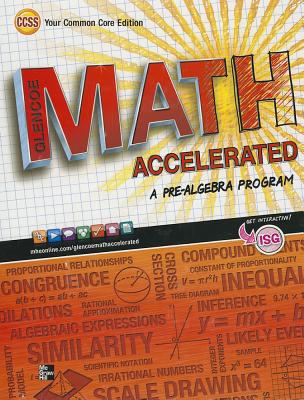
Concept explainers
i.
To find: The city has a greater range of temperature.
i.
Answer to Problem 11IP
Antelope has greater range of temperature,
Explanation of Solution
Given Information: In this table shows average monthly temperature for two different cities.
Antelope MT
Data set:
Range: To find the range subtract the lowest value from the highest value.
Range= highest-lowest
= 84-21 = 63
Quartiles: To find the quartiles divide the data set into two values. Don’t include the median if there is an odd number of items.
The first quartile is the median of the lower half. The first quartile is 33.5
The quartile is the median of the upper half. The third quartile is 75.5.
The interquartile range is the difference between the quartiles.
Interquartile range = 77.5-33.5 = 42.
Outliers: To find any outliers, first multiply the interquartile range by 1.5
Subtract 63 from the first quartile and add 63 to the third quartiles
Any value that is less than -29.5 as greater than 138.5 is an outlier.
There are no outliers.
Augusta,ME
Data set:
Range = 80-28 =52
Quartiles
First quartile = 37.5
Third quartile = 72.5
Interquartile range =72.5-37.5 = 35
Outliers =
Any value that is less than -15 or greater than 125 is an outlier
There are no outliers.
We see that Antelope, MT has greater range (63) than augusta ME (52).
ii.
To find: The measure of variability for each city.
ii.
Answer to Problem 11IP
The measures of variability are the quartiles and the inter-quartiles range
Explanation of Solution
Given Information: In this table shows average monthly temperature for two different cities.
The measure of variability are the quartiles and the interquartile range. They are listed above.
iii.
To find: The median and the interquartile ranges of the average temperature.
iii.
Answer to Problem 11IP
Antelope has a median of 58 degree while augusta has a median of 55.5.Antelope has an interquartile range of 42 while augusta is 35.
Explanation of Solution
Given Information: In this table shows average monthly temperature for two different cities.
Antelope has a median of 58 degree while augusta has a median of 55.5.Antelope has an interquartile range of 42 while augusta is 35.
iv.
To find: The appropriate measure of center to describe the average high temperature for augusta, justify your response.
iv.
Answer to Problem 11IP
Augusta average temperature have no outlines, large gaps R and not too money repeated values. The mean is more appropriate.
Explanation of Solution
Given Information: In this table shows average monthly temperature for two different cities.
Augusta average temperature have no outlines, large gaps R and not too money repeated values. The mean is more appropriate.
v.
To find: The average temperature of antelope and augusta, using both the measure of center and variability.
v.
Answer to Problem 11IP
antelope’s temperature are between 33.5 and 75.5 degree and augusta’s temperatures are between 37.5 and 72.5 degrees.
Explanation of Solution
Given Information: In this table shows average monthly temperature for two different cities.
Antelope one fourth of antelope’s temperature are lower than 33.5 degree. One fourth of antelope is temperature are higher than 75.5 degree. Half of antelope’s temperature are between 33.5 and 75.5 degree.
Augusta: One fourth of augusta temperature are higher than 72.5 degrees. Half of augusta’s temperatures are between 37.5 and 72.5 degrees.
Chapter 10 Solutions
Glencoe Math Accelerated, Student Edition
Additional Math Textbook Solutions
Single Variable Calculus: Early Transcendentals (2nd Edition) - Standalone book
University Calculus: Early Transcendentals (3rd Edition)
University Calculus: Early Transcendentals (4th Edition)
Thomas' Calculus: Early Transcendentals (14th Edition)
Calculus: Early Transcendentals (2nd Edition)
 Calculus: Early TranscendentalsCalculusISBN:9781285741550Author:James StewartPublisher:Cengage Learning
Calculus: Early TranscendentalsCalculusISBN:9781285741550Author:James StewartPublisher:Cengage Learning Thomas' Calculus (14th Edition)CalculusISBN:9780134438986Author:Joel R. Hass, Christopher E. Heil, Maurice D. WeirPublisher:PEARSON
Thomas' Calculus (14th Edition)CalculusISBN:9780134438986Author:Joel R. Hass, Christopher E. Heil, Maurice D. WeirPublisher:PEARSON Calculus: Early Transcendentals (3rd Edition)CalculusISBN:9780134763644Author:William L. Briggs, Lyle Cochran, Bernard Gillett, Eric SchulzPublisher:PEARSON
Calculus: Early Transcendentals (3rd Edition)CalculusISBN:9780134763644Author:William L. Briggs, Lyle Cochran, Bernard Gillett, Eric SchulzPublisher:PEARSON Calculus: Early TranscendentalsCalculusISBN:9781319050740Author:Jon Rogawski, Colin Adams, Robert FranzosaPublisher:W. H. Freeman
Calculus: Early TranscendentalsCalculusISBN:9781319050740Author:Jon Rogawski, Colin Adams, Robert FranzosaPublisher:W. H. Freeman
 Calculus: Early Transcendental FunctionsCalculusISBN:9781337552516Author:Ron Larson, Bruce H. EdwardsPublisher:Cengage Learning
Calculus: Early Transcendental FunctionsCalculusISBN:9781337552516Author:Ron Larson, Bruce H. EdwardsPublisher:Cengage Learning





